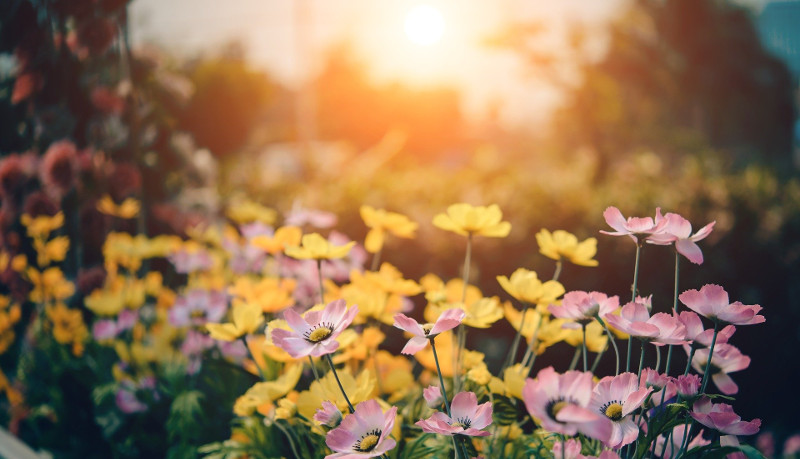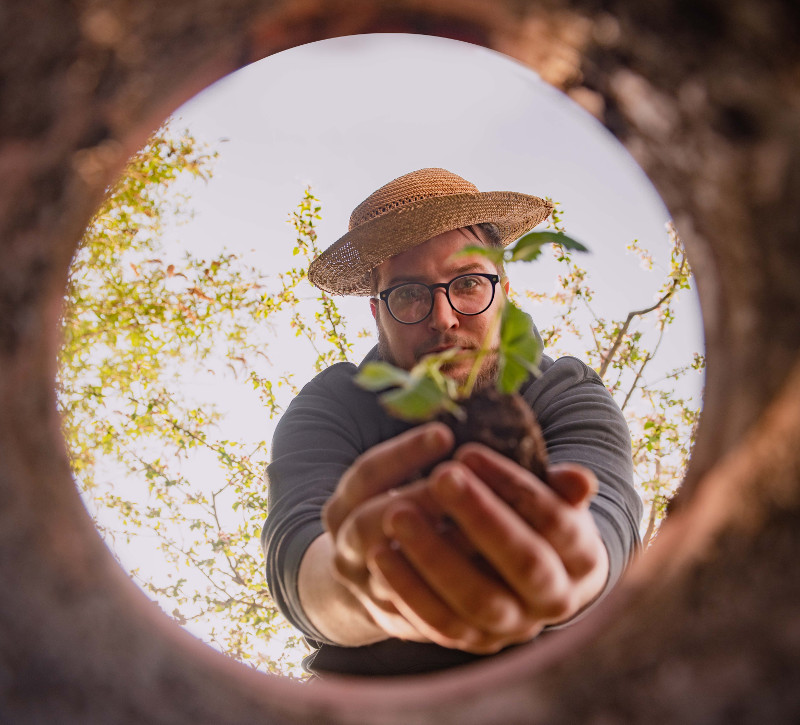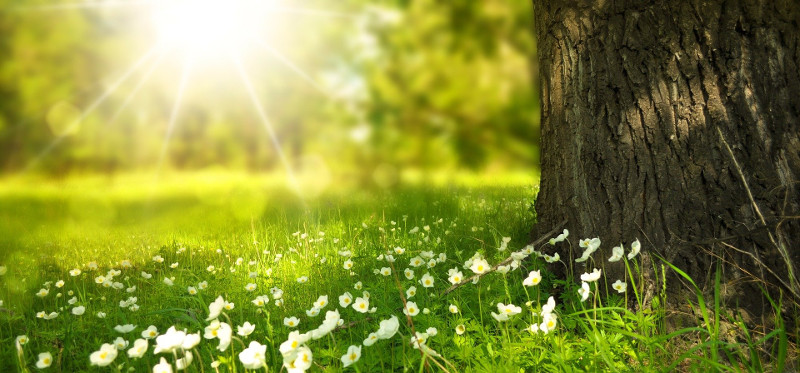We have all been there. Looking across the street, admiring your neighbor’s perfectly landscaped yard. The new evergreen tree, perfectly placed shrubs, and the flowering potted arrangements. Then you think to yourself, “ It’s so hot outside, planting now will never work.” “Why did I wait so long?” Good news-- it’s never too late to think about adding new plants to your garden areas.

Can You Plant Plants in Drought Conditions?
Adding new plants to your garden area during hot and dry conditions is not ideal, but it can be successful. The number one thing to remember during hot weather is WATER! Frequent watering will need to be done until the new plants are established. In addition, it is important to prepare your soil and the plant itself prior to planting.
- Plant Preparation - soak the new plants, container and all in water for 15 to 30 minutes before planting.
- Location - plant everything closer together as open ground areas will dry out faster during the summer.
- Soil Preparation - Dig each hole for the plants. Fill the holes with water and allow the water to soak in. Repeat this process until the soil is very hydrated. (may take up to 5 times to be completely hydrated) Place each plant in the holes and water well one more time.

How to Help Plants Survive and Thrive in the Heat
Until fully established, newly planted garden areas will need some extra care, especially during hot weather periods. The goal is to get the new roots to grow deeper, where they are more resistant to drought.
1. Watering - most gardan areas like an inch of moisture per week. During heat or drought conditions, more frequent (or even daily) watering will be needed. It is best to water slowly and deeply rather than frequent quick drinks of water. This allows the water to soak down into the roots where it stays moist for longer periods of time. Bedding plants should be watered to at least 6 inches deep. Perennials, shrubs and trees should be watered to at least 12 inches deep
2. Apply Mulch - adding a 2-3 inch layer of mulch around the base of plants helps a lot. This will keep the soil cooler,help to retain moisture, and protect the soil from direct sun.
3. Fertilizing - fertilizing promotes plant growth. While it is usually encouraged, during times of heat and drought, it is best to refrain from doing this until a cooler time. Fertilizer and water work together. Without water, the fertilizer can build up on the soil, resulting in burning of the plant’s roots and killing the plant.
4. Pull Weeds - Weeds steal valuable moisture out of the soil. Get those weeds out of the garden.
5. Deadhead Flowers - remove spent flowers before they have a chance to set seed. This saves energy for your plant. No need to use up extra water making seeds.

Protecting Plants in the Heat
Damage to your plants from extreme heat can hurt parts of a plant that are above ground as well as below ground. Plants grown in containers are especially prone to drying out as water evaporates much faster. Using our resin containers can help to prevent water loss. Refrain from planting too many plants in one container or using a too large container. Both will require extra water use.
Extra water - High temperatures increase the rate that water is lost to the atmosphere from a plant’s leaves, resulting in wilting and sunburn damage. The best time to water plants is early in the morning when temperatures are lower. Avoid overwatering, as soggy soil is not good for plants.
Shade - If possible, try to provide shade for your plants. Some containers can be moved to a shady spot, while others cannot. In ground plants obviously cannot be moved, so you will need to get creative. Nurseries carry landscape burlap, shade cloth, or portable shade canopies. Even moving a patio chair in front of a plant can shade it from the hottest part of the sun.
Mulch - adding mulch 2-3 inches around a plant helps to keep the soil several degrees cooler and retains moisture in the soil.
Avoid pruning - do not prune sun damaged growth. That damage is protecting the inside of the plant by providing shade.

Best Time of the Day to Plant
A perfect scenario for planting is an overcast day, just after it has rained. Most of us cannot wait for days like that, so early morning or in the evening when the sun goes down is the best time to plant. The air is a lot cooler and the sun is not so intense. At all costs, avoid planting in the heat of the day when the sun is the hottest. Your fragile new plant will thank you.
How Does Hot Temperature Affect Plant Growth?
Hot soil, hot air, and intense sunlight hamper plant growth. This is why container grown plants and newly planted plants need special watering needs during hot and dry spells. The deeper the roots are in the soil, the cooler they are. A symptom of hot soil and heat exposure is continued wilting of the plant in the afternoons followed by burnt foliage. Hot dry winds also cause moisture loss from a plant’s foliage.
Browning and drying at the tips of established leaves is a sign of a hot air injury. Tender new growth will wilt, followed by dieback. Rapid moisture loss can cause tender new leaves to turn black. Exposure to intense direct sunlight can cause a yellow-white burn on the upper surface of older leaves. This is a sign of stunted plant growth. Don’t worry, there are ways to revive heat stressed plants.
How to Revive Heat Stressed Plants
If you find that your plant is stressed from the heat of summer temperatures, or from an unusually dry spell, there are a few things you can try to revive your plant.
- Do not prune - refrain from snipping off brown, burnt or dead leaves. These leaves are actually providing shade to protect the lower leaves and branches. It does not look attractive, but will help your plant to recover.
- Provide shade - move planters or window boxes to a shady spot. If they require sun, find a spot where they will get morning or evening sun. If the plants are in a garden area, hang a shade cloth or canopy to protect tender plants in the heat of the day. Another option is to hang an old bed sheet to provide protection from the hot sun. Fold the sheet in half for better protection.
- Mulch - If you have not already, add a 2-3 inch layer of mulch to insulate the soil from heat and dry air. This also helps to keep the soil moist.
- Smart Watering - Soak the soil every time that you water. Drenching the soil ensures that the roots are getting a good deep drink. Water in the mornings when the water is less likely to evaporate and the plant can get a good drink before the heat of the day. Container plants may need twice daily watering.
What Happens to Plants When it's Too Hot Outside?
Heat and drought conditions weaken plants and can make them unable to survive an attack from pests and disease. Hot dry conditions can have a lasting effect on plants, especially trees and shrubs. Sometimes it can take several years to recover from a drought. You will be able to tell if your plant is in danger. Healthy green foliage wilts, develops crispy brown edges, or completely dies.
Flowers may fade very quickly or not bloom at all. If you see your plant wilting, water it immediately. If the leaves begin to plump up after a deep watering, then your plant should recover. If the leaves become sunburned and the stems are still green, the plant is still alive. If the leaves still have some green on them, the plant should survive. Do not remove the burnt leaves. They are providing protection for the lower leaves.
 |
Author Chris Link - Published 06-08-2021 |
